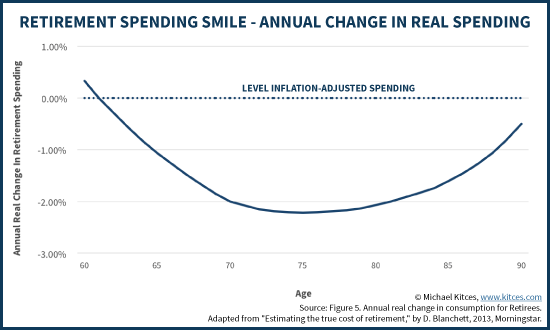训练1、全景深练习
被摄体:一般风景、花卉、城市建筑等冲击力较强的景物。
要 求:画面全部实焦。
建 议:首先使用广角镜头:24MM—35MM拍摄, 光 圈:F11—16,光圈优先AE模式。
训练2、单体对焦练习
要 求:只把焦点对在主要被摄体上,浅景深。
建 议:中望远镜头:85MM以上,光圈F5.6或更大。光圈优先AE模式。
训练3、定格练习
被摄体:体育运动项目、行走着的汽车、火车,流动着的水,瀑布等。
要 求:将激烈运动着的被摄体的瞬间动作或瞬间表情记录下来。
建 议:高速快门1/1000秒以上、快门速度优先AE模式。
训练4、动感练习
被摄体:体育运动项目、动态的人、流动着的水,瀑布等。
要 求: 运动员和动态人的身体的一部分虚化或动体实背景虚。流动着的水,瀑布等有流线感。
建 议:慢速快门1/15秒-11秒。先从1/30秒开始练习,然后1/15、1/8、1/4、1/2、1秒逐段练习。使用三脚架。
训练5、取景练习
要 求:突出主题,画面简练,能传达出被摄场景的气氛。 *此项训练是构图训练的基础
建 议:望远镜头,大光圈。
训练6、特写练习
被摄体:花卉、静物、昆虫等。
要 求:被摄体占画面的比例尽量大,突出被摄体的形状和有趣的部分,高清晰度。
建 议:使用微距镜头或微距功能及近摄接圈,最短摄影距离,镜头与被摄体保持平行。使用三脚架及快门线。
训练7、各种焦距镜头(镜头各焦段)的使用练习
利用各种焦距镜头(镜头各焦段)进行拍摄练习,借此了解镜头各个焦距的特点,理解画角及透视关系,活用各焦距段的不同景深。
标准镜头: 焦距50MM左右的镜头——极其自然,没有夸张。
广角镜头: 焦距35MM以下的镜头——强调远近感。
中望远镜头:焦距为85MM~135MM的镜头——与人眼最接近的透视(远近)感,能正确体现被摄体的形状,多用于人像摄影。
望远镜头:焦距为200MM以上的镜头——很少远近感,有压缩效果。(易抖动,尽量使用三脚架)
练习8、横、纵位构图
被摄体:景物、山河、建筑、人物等.
要 求:用横位构图表现稳定感和宽阔感,用纵位构图表现纵深 感和高度感,画面不能有无用的空间.
建 议:1、对同一被摄体分别用横、纵位构图法拍摄,比较作品的不同感受.
2、横位构图表现安定感时使用标准焦点以上的镜头,表现宽阔感时使用广角镜头.
3、纵位构图表现纵深感与高度感时使用广角镜头,注意画面中近景与远景的位置配置.
4、构图时应特别注意水平与垂直,使用三脚架
练习9、三角形构图
被摄体:三角形或类似三角形的景物,建筑,人物造型等.
要 求: 利用三角形在画面中不同的位置配置,表现稳定感、跃动感、高度感和宽阔感.
建 议:1、画面中有容易识别的三角形造型,三角形构成的复数物体焦点要实,要有平衡感.
2、高楼大厦和道路等高大细长的景物时使用20MM以下的广角镜头.
3、使用景深预测功能.
练习10、对称形构图
被摄体:所有具有对称构图性质的景物、人物造型、建筑等.
要 求:利用上下左右对称构图,表现稳定感和超现实意境.
建 议:1、选择优美的对称形,对称形的两边焦点都要实,每个对称形表现要明显.
2、尽量使用标准焦点以上的镜头,使用广角镜头时要注意相机与被摄体保持平行.
3、拍摄岸边与水中的对称构图景物时使用偏光镜,
4、求全景深不得不用小光圈时使用三脚架.
练习11、垂直、水平构图
被摄体:风景、建筑等.
要 求:画面中表现由多条平行或垂直线条构成的单纯美.
建 议:画面构成的线条要保持水平或垂直,线条要美, 水平或垂直线条造型要布满全画面. 使用三脚架
练习12、S形、斜线构图
被摄物:具有S形或斜线构成的道路、河流、山峦、都市内的桥梁和道路等.
要 求:用S形表现纵深感,用斜线表现外延的广阔感和动感.S形要通达画面的两端,中途断了的话前面要有空间构成.
建 议:S形及斜线的配置要有平衡感,要仔细感觉作品是否有纵深感和广阔感,被摄体是否清晰. 主题要突出.
练习13、黄金分割法构图
被摄提示:任何均可.
要 求:被表现的主体要处在分割点、线上或附近,构图要平衡,被摄体要突出,画面中不能有多余的部分存在。
建 议:首先按自己的想法构图,然后再活用黄金分割法.
第三单元:用光训练[1]
练习14、昼间闪光灯曝光补偿
被摄体:人物、花卉、宠物、小范围自然景色、静物等近距离小范围景物。
要求:当以上被摄体处于逆光、侧逆光并周围光线强于被摄体时或被摄体处于昼间阴暗处时使用。
建议:1、用闪光灯同步速度测光(平均测光)取得光圈值,然后用闪光灯的指数除以光圈值得到拍摄距离,就能得到曝光准确的照片。
例如:相机的闪光同步是1/125秒,用相机的自动测光得到的F值16,闪光灯的指数(GN)是40,即40/16(F)=2.5M,这时的拍摄距离为2.5米。
2、已知闪光指数(GN)和距离求光圈(F)时用闪光灯指数除以距离求得光圈(F)。 即:GN/距离=F。
练习15、利用闪光灯体现作品的立体感
被摄体:人物、花卉、、宠物、静物等。
要求:使用外置闪光灯并利用连线使闪光灯离开相机,从斜上方或背后投光制造立体感,也可以投到天花板或利用反光板制造折射的柔光,具体投光方法与方向按自己意图具体安排。但是要尽量避免重阴影。
建 议:可能的情况下尽量尝试各种投光方式及曝光补偿所制造出来的立体感觉。
练习16、室内及夜晚灯光摄影
被摄体:室内灯光下的集会以及城市灯光夜景等。
要求:利用色温在室内及夜灯下制造肉眼见不到的独特(泛红)氛围。
建议:画面内的光线布置尽量均匀,镜头附近最好没有强光源并不能有强光射进镜头,拍静物时使用三脚架,抓拍时最好使用ISO400的胶卷。如果希望得到忠实于原色的作品,使用80A滤镜矫正色温。曝光不能有过。
练习17、朝阳、夕阳、夜景
被摄体:朝阳、夕阳下的山峦、海岸线、自然风光及夜景。
要求:要充分体现朝夕的氛围,再现朝夕夜景的绚丽景色,不能有多余的物体进入画面,最好没有晕光。
建议:使用手动,基本上光圈为F8~11左右,AE光圈优先,远景时焦点调到无限远,10M以内对点光源等最容易看清楚的物体上对蕉,使用三脚架,可以考虑多次曝光。
练习18、白色物体
被摄体:雪景、白色沙滩、白色花卉等白色物体。
要求:清晰再现白色物体的质感与色调。
建议:根据实测曝光量适当曝光补偿,补偿量根据白色物体占画面的比例和你要表现作品的意图一般为0.5~1.5EV之间,画面中黑白物体相间时根据各占比例调整。
第四单元:用光训练[2]
练习19、逆光(透射光)的运用
被摄体:光线从背后照射的人物、风景、花卉、静物及抓拍等.
要 求:充分利用逆光的特点制造透明感和立体感.注意被摄体与背景的亮度平衡及不能有创作意图以外的光晕产生.
建 议:使用曝光补偿以及反光板. 曝光补偿量有+0.5、+1.0、+1.5、+2.0EV等,补偿越大,被摄主体越亮,如果把握不好曝光补偿量,可以分段补偿各拍一张以上以保证拍摄成功。
练习20、侧光的运用
被摄体:与此种光线有关的人物、风景、花卉、植物、宠物以及抓拍.
要 求:充分活用阴影的效果,使画面的氛围符合自己的拍摄意图,通过练习提高对光的敏感性.
建 议:拍摄时从顺光、侧光、斜侧光、半逆光、逆光的顺序去观察被摄体,并注意侧光与逆光所制造出的物体立体感之差别.如利用强侧光可塑造男人的刚毅和弱侧光可营造女人的温柔等.使用遮光罩。
练习21、林中点光与泻光的运用
被摄体:具有泻光特点的林中、阴天下的风景如山峦、江和湖海的水面等.
要 求:充分利用点、泻光的特点营造出印象深刻和感动人的氛围.
建 议:注意光比范围及曝光量的掌握,明暗差要适当,用点测光方式测得明处与暗处的曝光量后取中间值进行最后的曝光。
练习22、极端曝光的应用
被摄体:想要高调表现(阴影淡的)或低调表现(反差大的)的一切被摄体材.
要 求:摄影意图以及主题要鲜明,要考虑采用高调或低调的必要性,被摄体的所具有的氛围要协调.
建 议:高调的曝光补偿从0~+2.0,低调的曝光补偿从0~-2.0,通过分段曝光,掌握在各种条件下的曝光补偿所带来的效果。
练习23、光的轨迹
被摄体:夜间流动的车、船、星空、焰火等.
要 求:流畅地表现光的流动,光的流线色彩、形状、大小与周围的气氛要协调, 曝光要适当.
建 议:利用平均测光与中央部分重点测光模式。也可以把光圈设定为F4或F5.6, 曝光为30秒至2分钟(可用B门)。焰火一般使用ISO100胶片,光圈在F5.6~F11之间.星空的曝光时间最长可到1~2小时。以上均使三脚架。
练习24、有灯光照明的物体
被摄体:都市内夜间被灯光照亮的建筑以及植物等.
要 求:取景角度要体现被摄体的魅力,选择能够充分表现气氛的曝光,画面中主体的所占比例要适当。
建 议:使用三脚架、快门线,使用手动模式,B门或T门,使用曝光补偿+0.5—1.5EV。注意构图时画面中最亮部分与最暗部分,避免亮度相差悬殊,长时间曝光时注意倒易失律问题。使用广角镜头。
第五单元:强调色彩的训练
练习25、26、27、28、29、30
分别以红色、蓝色、黄色、绿色、白色、黑色为主要特征的被摄体做表现主题的练习。
被摄体:具有以上颜色的各类物体及颜色着装的人物、花卉等。
要 求:要表现出以上个种颜色的鲜明特征,把握好色调、明亮度、饱和度这色彩的三要素。
建 议:注意冷暖色的表现,可能的话使用滤色镜,使用包围式摄影法体验曝光补偿对色彩表现的作于用。
练习31、表现水的透明感
被摄体:与水有关的任何物体。
要 求:在表现水透明感的同时注意作品的整体表现。
建 议:注意水面的光反射,使用PL镜,使用是旋转PL镜找到最佳表现。
练习32、色彩对比
被摄体:各种颜色掺杂形成对比的田野、公园、建筑群等。
要 求:利用色彩对比增强作品的感染力。
建 议:不要使太多的色彩进入画面,形成对比色彩的亮度差越大对比度越强,明亮色与形成对比的暗色容易醒目,同一颜色的实焦点处与虚焦点处可以形成对比。
练习33、黑白摄影
被摄体:任何物体、人物等。
要 求:主题与背景的关系性,理解黑白摄影作品的特性。
建 议:有必要了解彩色变成黑白后的具体变化,既把红色当做浓黑、黄色当做灰色考虑等,并了解与灰阶的关系。
练习34、单色调的表现
被摄体:大自然中的群生植物,大面积单色花卉,色调统一的室内房厅等。
要 求:有效使用统一的色调,构图平衡,充分掌握色彩的浓淡度。
建 议:注意色彩的饱和度,使画面内的色彩表现有张有弛,使用色温滤镜。
第六单元:表现动感与感情的训练
练习35、动感的表现
被摄体:体育运动、动物、纪念活动、花草、河流等。
要 求:充分记录并表现运动的物体或人,表现出运动着的力量感和动态美,合理构图,掌握适合被摄场景的快门和按快门的时机。
建 议:如果条件允许,尽量使用快门优先模式,定格高速运动时使用快门速度为1/500-1/1000秒,表现流动感时使用1/15-1/4秒,追拍时可使用1/15或1/30秒。
练习36、临场感的表现
被摄体:火灾及事故现场,祭祀活动,仪式,自然气象状况等。
要 求:尽量表现临场感,使人身临其境。即使是较平凡的被摄体,也要利用技术与器材制造出临场感。
建 议:尽量接近被摄体使用超广角或望远镜头,光圈使用F11、F16、F22求大景深。表现自然气象状况如台风、大雨、雾、急流时使用三脚架,快门1/8、1/4、1/2秒优先,并可使用包围式拍摄法。
练习37、寂静感的表现
被摄体:自然风光。
要 求:摄影者自身要宁静安稳,选择最佳的拍摄时间和天气,选择稳定简洁且容易传达静感的构图方式。
建 议:拍摄时间最好在黎明、傍晚、明月夜、雨天、雾、雪天等。选择对称、三角形等增加寂静感,构图要横平竖直,不能有倾斜以强调集中感和稳定感。使用三脚架。
练习38、感情的表现
被摄体:人、动物的脸部特写与身体(动作的瞬间抓拍)。
要 求:掌握最佳快门时机,做到与被摄人或动物心感相通,除脸部外也要注意其他肢体的表现与主题相吻合,注意构图的各个细节。
建 议:先从身边的人特别是小孩和宠物开始练习,平时多多注意他们(它们)的喜怒哀乐,并找出有趣的特点,然后利用望远镜头在被摄人或动物不注意的时候抓拍。开始练习时尽量利用自动模式
























